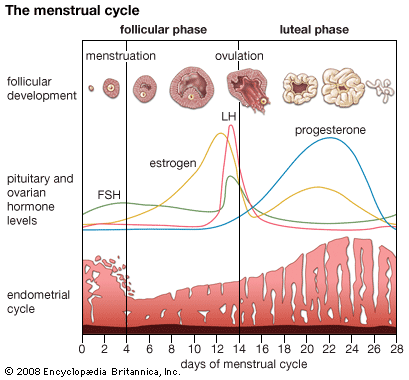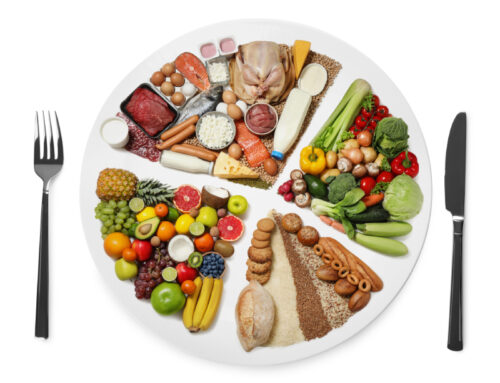By Dr. Kathleen Regan, ND
When it comes to fitness and nutrition, women have different needs than men. Fitness-based nutrition programs & training schedules have long assumed that men and women are the same. Modern research has taught us that there are important differences between the sexes and understanding our uniqueness can help maximize female performance.
- Female body composition is naturally higher in fat. The upside is that women use fat as their primary energy source. Women use dietary fats more efficiently than men but tend to lose fat less readily. How is that fair?! Estrogen seems to play a large role in this paradox. It has been shown that estrogen enhances fat use during exercise BUT reduces a woman’s ability to burn fat as energy after eating. Therefore, women may be better off to consume food before exercise but avoid food for 90 minutes after exercise to allow for the body to reach the maximum benefits of exercise induced fat burning.
- Women’s bodies tend not to burn carbohydrates as fuel until they reach very high levels of exercise intensity (~80-85% max effort). Carbohydrate loading may not be appropriate for the female fitness routine unless she is training at max effort (80-85% VO2max). If a woman is carbohydrate loading during moderate exercise she may not utilize this macronutrient. Worse, these unused carbs are ultimately converted and stored as fat. Therefore, unless a woman is training at a regular high intensity, she will benefit from keeping carbohydrates more moderate or approximately 30% of daily nutrient intake.
- The menstrual cycle and hormonal fluctuations women experience throughout the month influence their physical response to training as well as their metabolism of carbohydrates and fats. This mean that women need to vary nutrition and fitness schedules based on where they are in their cycle. Ignoring this important variable can lead to fatigue, delayed onset of muscle soreness, injury and ‘hitting the wall’ with a thud.
These female differences are cyclical and a woman’s fitness and nutrition schedule should follow suit. How can women adjust their routine to reflect their unique physiologies?
It is well known that women have a higher percentage of body fat then men. While women tend to store fat more on their hips and buttocks just below the skin (subcutaneous), men tend to store fat on their abdomen between the organs (visceral). This difference seems to be due in part to estrogen, which helps women to store fat in preparation for fertility and pregnancy.
Estrogen has many other important roles besides fertility including increasing glucose availability and uptake of sugars into the muscles as well as increasing free fatty acids for energy use. In plain English this means estrogen can improve insulin sensitivity and promote fat burning instead of fat storage under the right circumstances (see #1 above).
If body fat is too low, estrogen drops and women can lose their menstrual cycles and ability to become pregnant – an all-to-common problem in female athletes with low body fat. This can be a Catch 22 for female athletes because, although low body fat may be desired, the low estrogen levels that follow can negatively impact female fitness. Furthermore, over the long-term, low estrogen puts women at a great risk of developing diabetes, heart disease and osteoporosis. Women need balanced estrogen levels for training because it helps them to improve endurance while building muscle and promoting muscle recovery. ‘Balanced’ estrogen is a tricky thing because it fluctuates throughout the menstrual cycle and women should adjust their fitness routine to reflect these fluctuations.
Estrogen works in a fine balance throughout the menstrual cycle with other hormones. Another hormone it works closely with is progesterone. Progesterone opposes estrogen in many fitness-related ways (think endurance, muscle building and recovery) but can make the body more sensitive to carbohydrates, or more insulin resistant. Therefore, during higher estrogen periods women will be able to train at peak performance while efficiently using carbohydrates and fats. During progesterone dominant periods, women will train below peak performance with poor efficiency for metabolizing carbohydrates (making fats the preferable energy source). Knowledge is strength and utilizing this info can let women play to their strengths by tracking cycles and modifying training and diet accordingly.
Technically, estrogen levels peak from about day 6-16 of the menstrual cycle while progesterone peaks from about day 20 till the end of the cycle (around day 28). The estrogen peaks are the best time for women to train hard! This timing may be too difficult to plan training around – especially if you have an irregular period. To make things easier to plan for think of the menstrual cycle as divided into two periods, the follicular phase (Day 1-14) and the Luteal Phase (Day 15-28). Estrogen is associated with the follicular phase and progesterone is associated with the luteal phase.
Training during the Follicular Phase: This is a high endurance, powerful, muscle building time. The body uses carbohydrates with maximum efficiency while burning more fats. Schedule your endurance training and higher intensity weight training sessions during this time. Consider a macronutrient schedule with more carbohydrates: 30% of daily energy intake from carbs, 40% from protein and 30% from fat.
Training during the Luteal Phase: This is naturally a low endurance tolerance time with less muscle power and more susceptibility to injury from over training. During the luteal phase women are less able to handle carbohydrates and have less metabolic flexibility. Lower intensity cardio training or higher intensity intermittent interval training (in shorter sessions) is recommended during this time. Women may be better off using fats for fuel while reducing carbohydrates with 20% of daily energy intake from carbs, 40% from protein and 40% from fat. This may also be a more suitable time for supplementing with branched chain amino acids and protein in general to support your muscles in strength and recovery.
TIP: Keep in mind that every woman’s cycle is slightly different. Track your cycles and tune into your body. You will soon learn the natural times where your strength is highest.
What about carbohydrate loading? This is a concept that research is showing to more relevant to men. In women, it is recommended only on days of high training intensity during the follicular phase.
If you are adjusting your fat intake to maximize your training schedule, keep one thing in mind…. Not all fats are created equal. Saturated fats should remain below 10% of daily intake. Increasing saturated fats leads to inflammation. You want your fats to come mainly from the unsaturated polyunsaturated and monounsaturated fats. Of these fats, you want a good portion to come from the anti-inflammatory omega 3 fatty acids such as fish oil, flax oil and hemp oil.
Saturated Fats: Beef, Lamb, Pork, Poultry, Butter, Cheese, Cream, Coconut Oil.
Unsaturated Fats: Fish, Nuts, Seeds, Avocado, Vegetable Oils such as Flax Oil, Hemp Oil, Olive Oil.
Using a fitness app to add your macronutrients up can be extremely useful and even necessary when cycling macronutrients with your menstrual cycle. I use myfitnesspal with patients but certainly there are many other helpful apps. Remember, fats are very nutrient dense and can add up quickly. One very common mistake is consumption of fats out of balance with fitness needs, which quickly leads to additional weight gain and delays in fitness goals. You don’t have to track you nutrition forever but tracking for a 1-3 months will give you a feel for the nutritional and energy value of your foods. Working with an experienced naturopathic doctor or nutritionist can also be very helpful in individualizing your fitness plan according to your hormonal changes.
One additional thing. The above information is aimed towards women with regular and/or natural cycles (not affected by hormonal irregularities or birth control medications). Women can suffer from menstrual irregularity or hormonal imbalance for many different reasons. Estrogen dominance is one of these reasons. Estrogen dominance is prevalent at this time due to environmental exposure, xenoestrogens in plastics, medications and cosmetics as well as hormone exposure through foods subject to modern farming practices. Estrogen dominance is associated with obesity, fibrocystic breast changes, menstrual irregularity, and certain types of cancer risk including breast cancer. So, intentionally increasing estrogen to enhance performance is unwise and does not show particular benefit for women in the scientific literature. Estrogen will enhance fitness and performance only when in balance with the natural rhythm of women’s bodies.
Sources:
Blaak E. Gender differences in fat metabolism. Curr Opin Clin Nutr Metab Care.2001 Nov;4(6):499-502. Review.
Carstens et al. (2013) Fasting substrate oxidation in relation to habitual dietary fat intake and insulin resistance in non-diabetic women: a case for metabolic flexibility? Nutrition & Metabolism 10(8)
Luglio HF. Estrogen and body weight regulation in women: the role of estrogen receptor alpha (ER-α) on adipocyte lipolysis. Acta Med Indones. 2014 Oct;46(4):333-8. Review.
Wismann, J., & Willoughby, D. (2006). Gender Differences in Carbohydrate Metabolism and Carbohydrate Loading. Journal of the International Society of Sports Nutrition, 3(1), 28–34.






